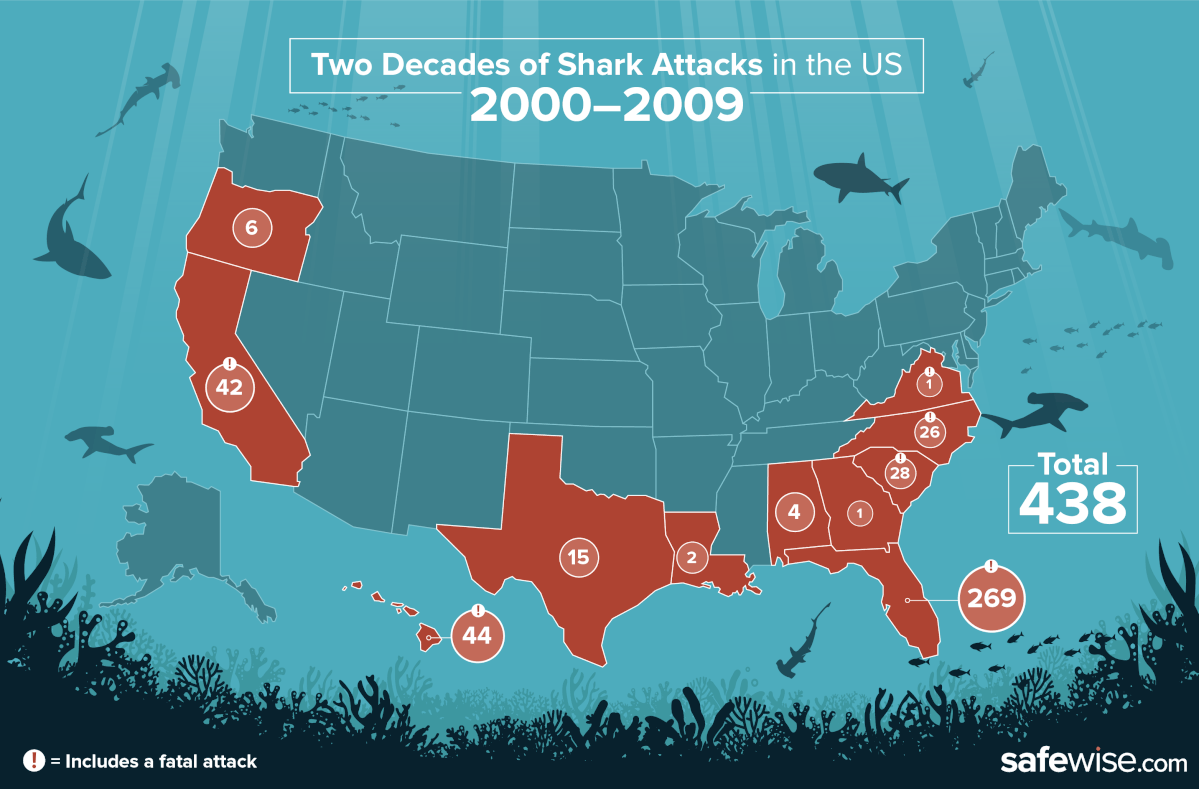From Spielberg to the Discovery Channel, sharks have captured the world’s imagination. The media portrays them as toothy terrors that emerge from the deep to devour innocent swimmers. But is that real or just Hollywood?
With the premiere of Shark Week 2019 on July 28, we wanted to sink our teeth into the facts and statistics surrounding shark attacks and the likelihood of encountering a shark on your beach vacation. Because of overfishing, the populations of large shark species have declined over 90%.1 The truth is, we’re more of a threat to sharks than they are to us.
We dove into the data to learn about the history of shark attacks in the US since 2000.







